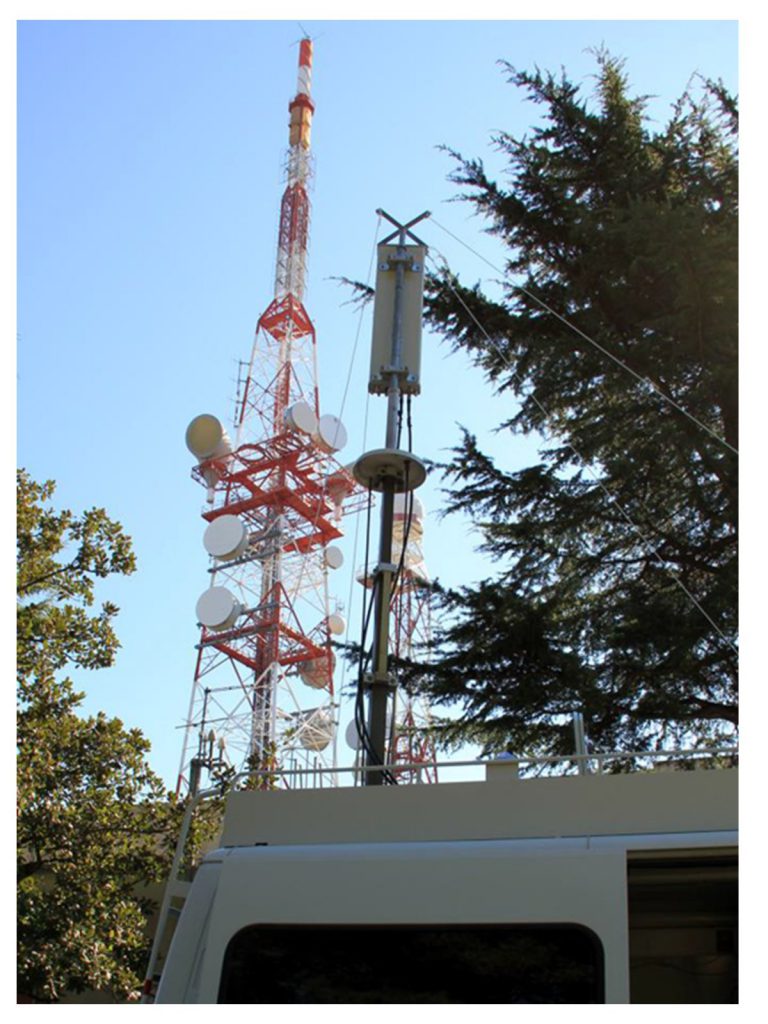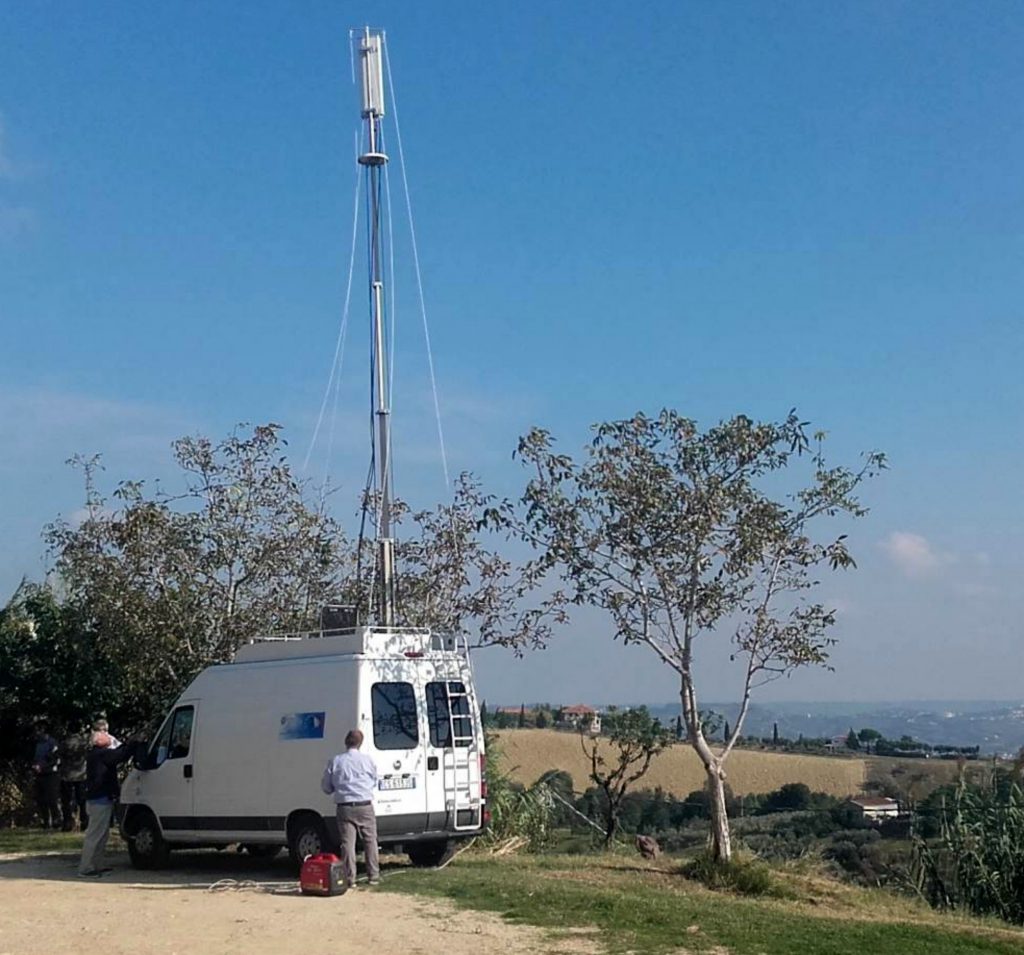Experimentation of the coexistence of Radio Link services and LTE in the 3.6-3.7 GHz band
The growing demand for transmission capacity by operators of mobile telephony has led in recent years Governments in evaluating new methods of management of the radio spectrum. For their contribution and distribution services, television operators, including Rai/RaiWay, use frequency resources maintained by the Ministry of Economic Development (MISE) on well defined areas (e.g. SDH radio links). To optimize resources, the European Union promotes, in certain frequency bands, the adoption of spectrum sharing, according to different approaches. Recently, MISE with the collaboration of FUB (Ugo Bordoni Foundation) and the Joint Research Center (JRC) of the European Commission has launched a pilot project for the evaluation of possible ways of spectrum sharing between the different services. In particular, it is mandatory to ensure that the primary assignee of the frequency band (TV network operator) does not suffer from interference impairing the normal service operation.

Within the framework of said activities, Rai and Rai Way as primary operators have been invited to participate in a field trial organized by MiSE, in order to assess the interference problems on radio links due to the spectrum sharing, and assess the adequacy of the sharing policy proposed in the ECC Report 203 [1]. The Pescara-Teramo radio link has been chosen for this joint experimentation, involving Rai-CRIT, Rai Way, MiSE, FUB, JRC and the equipment manufacturer Huawei. In a preliminary phase, in Rai-CRIT the radio scenario has been analyzed through simulations performed using Aldena software, which made it possible to identify the geographical locations to focus on.
The data collected during testing the test campaign [2] include: level of received and interfering signals in different conditions, measured C/(N + I) ratio, power spectra of signals and bit error rate on the radio link. It was therefore possible to obtain useful conclusions regarding the coexistence of fixed services (radio links) and LTE, in relation to the criteria proposed by the aforementioned ECC Rep. 203 document.
Unlike similar field tests [3,4] made in the 2,3-2,4 GHz band (wireless cameras), in the case of radio links it is essential to consider that the permanent use of the link, in the presence of various weather and propagation conditions in different seasons of the year imposes strict requirements to protect against fading due to natural causes (rain, thermal stratification of the air, mechanical stress of antennas by the wind , etc.). This implies that during the link design a suitable margin from fading is included, determined on the basis of the availability goals. This margin is obtained at the price of considerable costs for the operator: 4 m antenna dishes, double installations (space diversity), higher complexity devices: this has been taken into account during the tests, and the erosion of the precious fading margin caused by the interference has been the subject of special attention during the measurements.

More information
Authors:
Assunta De Vita, Davide Milanesio, Bruno Sacco
Collaborations:
- RAI: Arturo Baglioni, Cristiano Raniolo
- RAI WAY: Antonio Sabatini, Simone Vitiello
- MISE, Centro Nazionale di Controllo Emissioni Radioelettriche (CNCER)
- Fondazione Ugo Bordoni
- Joint Research Center (JRC) of the European Commission
- Huawei
References
[1] ECC-Electronic Communications Committee, Report 203 – Least Restrictive Technical Conditions suitable for Mobile/Fixed Communication Networks (MFCN), including IMT, in the frequency bands 3400-3600 MHz and 3600-3800 MHz, CEPT 2014
[2] A. Sabatini. S. Vitiello, A.Baglioni, A. De Vita, D. Milanesio, C. Raniolo, B. Sacco: “Sperimentazione in banda 3600MHz–3800MHz – LTE: analisi interferenziale sulla tratta in Ponte Radio Teramo La Croce – Pescara S.Silvestro”, Relazione tecnica CRIT n° 2016/xx, novembre 2016 (in Italian)
[3] A. Bertella, A. De Vita, V. Mignone, D. Milanesio, B. Sacco, M. Tabone: “Sperimentazione della coesistenza di servizi PMSE e LTE in modalità LSA nella banda 2.3-2.4 GHz: analisi preliminari”, Relazione tecnica CRIT n° 2016, novembre 2016 (in Italian)
[4] A. Baglioni, A. Cafasso, A. De Vita, V. Mignone, D. Milanesio, C. Raniolo, B. Sacco: “Report sui test PMSE-LTE nella banda 2,3-2,4 GHz (Roma, 12-13 settembre 2016)”, Relazione tecnica CRIT n° 2016, novembre 2016 (in Italian)
Related Projects

Active project
Mitigation techniques of the interference generated in TV distribution installations by 4G/5G signals in the 700 and 800 MHz bands
The activation in the UHF band of 4G/5G Base Stations can have in some areas an impact on TV reception, especially in case of community antenna installations. The adoption of proper interference mitigation techniques, such as the insertion of specifically designed filters at the head-end of the distribution network, allows to mimimise the effects in most situations.

Experimental activity (completed)
Experimentation of the coexistence of PMSE services and LTE in the 2.3-2.4 GHz band
The growing demand for transmission capacity for mobile access has led in recent years public administrations to consider new ways of spectrum management, which include sharing between different services and operators. At the invitation of the Italian Ministry of Economic Development we have participated and contributed to a field experiment aimed at assessing the problems of interference eventually suffered by PMSE services (wireless cameras for TV production) by LTE services in the 2.3-2.4 GHz band.

Active project
Networks and Protocols
The television signal that we can see in our living room, after being generated in a TV studio or in an external shooting site, in order to reach our TV set, makes use of a rather complex and articulated telecommunications network. Broadcasting from the closest TV transmitter represents only the last part of this network.
The “Networks and Protocols” project has the task of studying the transport networks for TV signals from the shooting point up to the transmitters, with the purpose of guiding and accompanying the technological evolution of Rai networks.